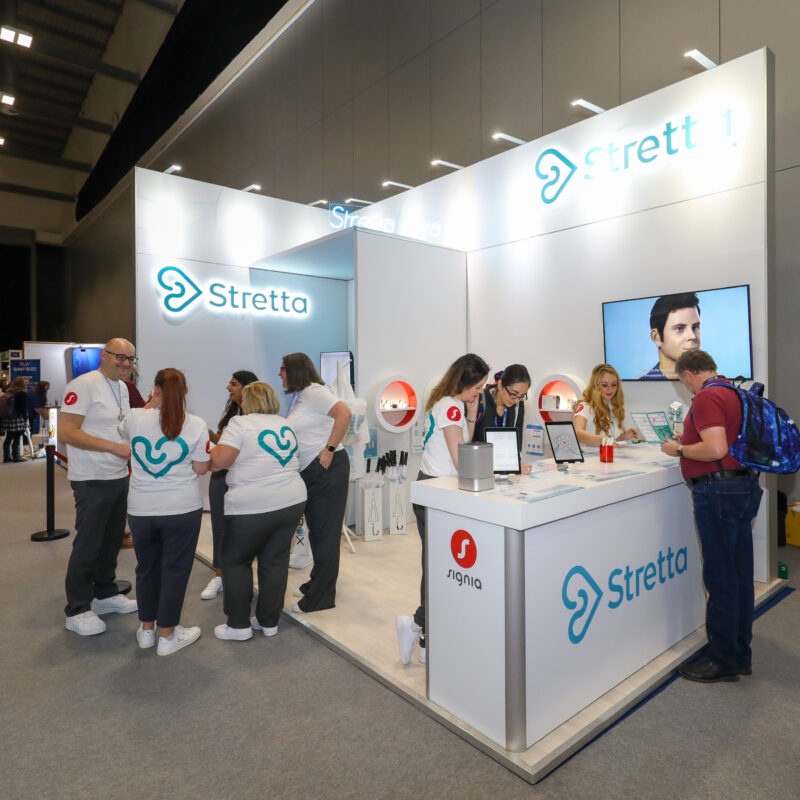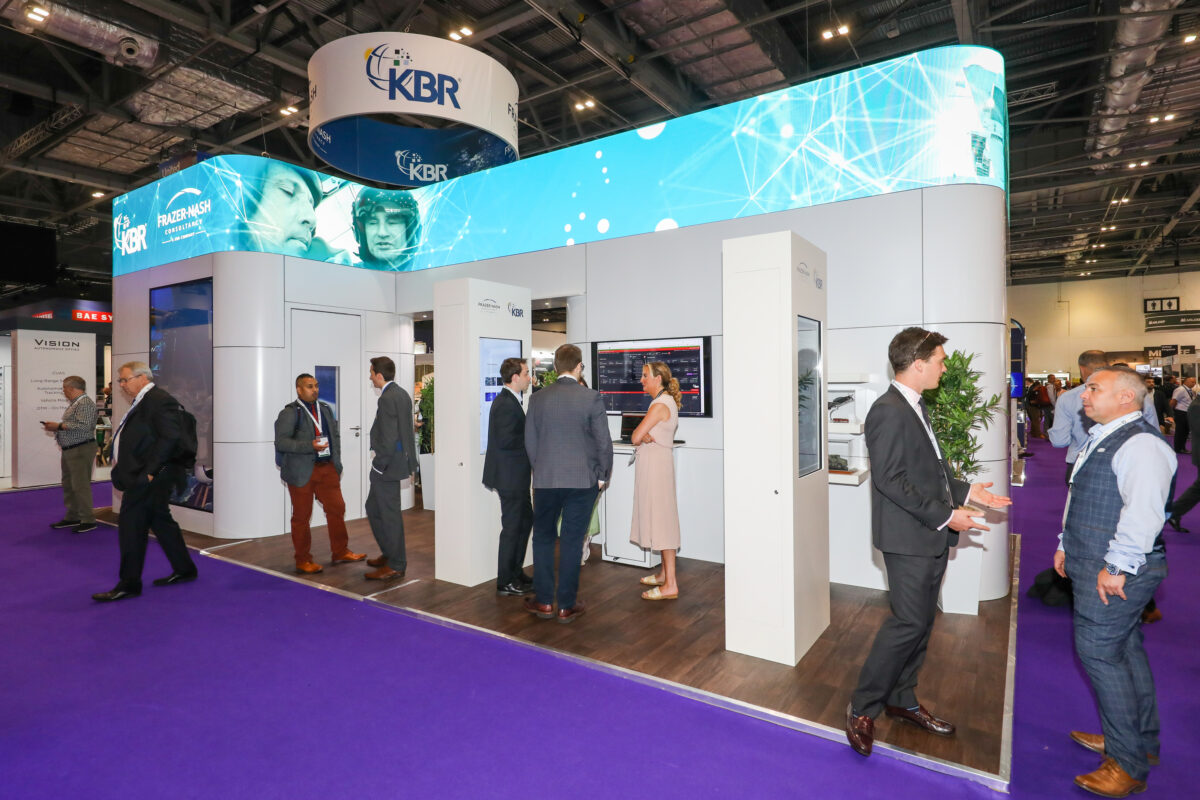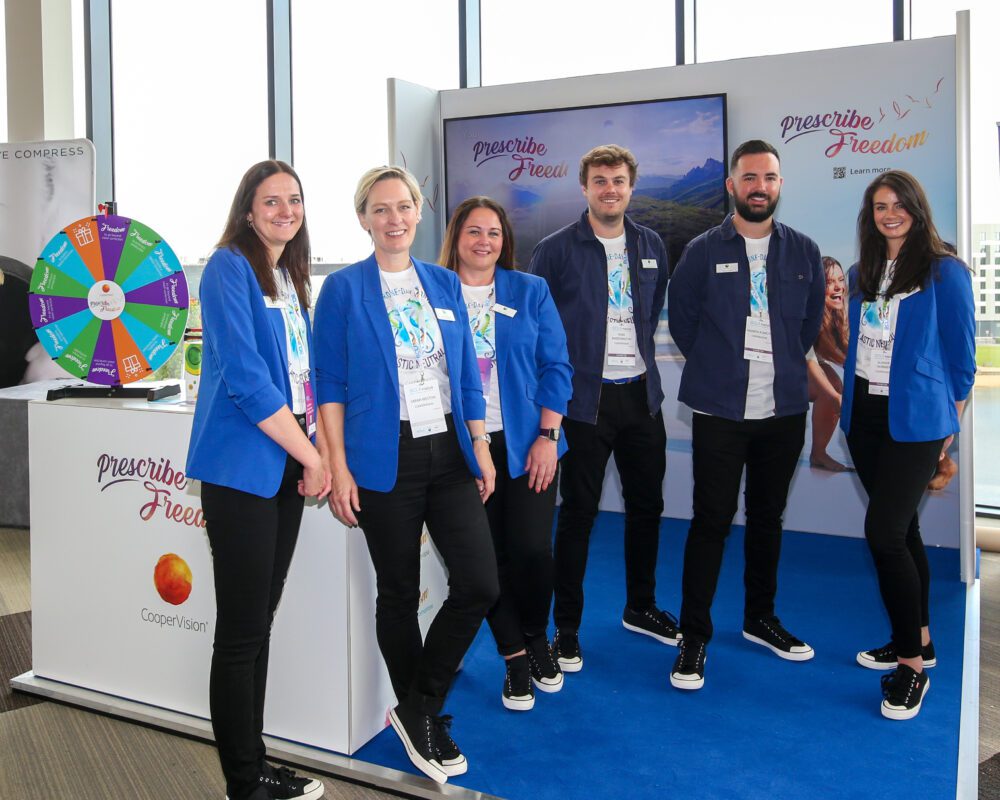To get the maximum value from your investment in an exhibition stand or trade show display, it’s vital that everyone in your team understands the role they need to play.
The overall goal(s) of your stand will be clear enough – you want to capture leads and raise awareness of your products/services and brand. In a nutshell, you want to instigate or develop conversations that will lead to sales.
But you’ll have the best chance of succeeding in that objective if everyone on your stand understands the role they play, and how their function interacts with that of other roles and staff as part of the bigger picture. This is especially important when, as it often happens, staff are called on to perform roles on the stand that are different from their day-to-day work.
While different people will be assigned different roles, shows can be chaotic – especially at busy times – and sometimes your staff will need to assume different roles as needed. The Specialist may need to become a Greeter on occasion, for example, and the roles of Techie and Runner may often overlap too.
Bear in mind that the roles below don’t necessarily correspond to the number of staff on your exhibition stand. Depending on your stand size and investment, it may be that some individuals take on more than one of these roles, or – at the other end of the scale – that some of these roles are carried out by multiple people. Your Techie and your Runner may be the same person, for example, while you may deploy not just one but a team of Greeters.

5 Key Roles of Exhibition Stand Staff
1. The Greeter
The role of The Greeter is to be available to welcome new or returning visitors to the display stand, qualify their interest, and move them on to the next stage of their interaction with your company.
Greeters may stray beyond your stand area into the flow of people to lure them into your exhibition area, perhaps with a fun game, challenge or freebie. As such they need to be outgoing people with an eye for a prospect – and are often chosen from among your sales staff.
There are a number of important skills in play here:
- Breaking the ice: The Greeter needs to be able to quickly establish rapport with a stand visitor, projecting a friendly, helpful presence that makes them feel they have come to the right place.
- Guiding the conversation: They need to be able to strike a careful balance in their conversation, balancing friendly small talk and business focus without coming across as either pushy or non-committal. Active listening is the key here.
- Qualifying the prospect: The Greeter needs to make a rapid assessment of a stand visitor’s prospects as a lead. Are they a tyre-kicker, perhaps someone looking for a job or visiting from another stand? Or are they someone with a genuine interest in your company and some budget to spend? The best and most effective way to quickly qualify a visitor is to ask a simple, closed question. For example, here at Clip we may ask “are you involved in organising any exhibitions, events or display products for your company?” If the answer is no, then they’re not the people we want to be speaking to, so wrap up the conversation by wishing the visitor a great show and move on to the next. If the answer is yes, then follow the next step below.
- Steering the next step: Once the Greeter has made their rapid qualification assessment, they can use a quick follow-up question to understand who best in your team can talk to the visitor about your products and services. Use a quick secondary question to ascertain what services or products the visitor is interested in. As an example “what size of stand or event do you generally work on for your company” This then enables the Greeter to direct the visitor to the right person on the stand to have a more detailed conversation with.
2. The Techie
The role of the Techie is to handle all the tech and logistics relating to the set-up and efficient running of the stand.
They are on hand to ensure that all IT is working correctly, phones and devices are charged, and network connectivity is optimal. Any data capture devices you’re using require special, ongoing attention too.
The techie is on hand not just to see that all these things are up and running at the outset, but to troubleshoot any issues that crop up over the course of the show. This also means having relevant contacts to hand in the event that something goes wrong that can’t be rapidly fixed.
The Techie may be someone from your IT team, or they may be from another part of the business but with a strong grasp of equipment and connectivity.
3. The Runner
The role of the Runner is to handle admin and personnel needs. They are the vital support that enables the Greeters, Marketers and Specialists to focus on their key priority: finding and talking to prospects.
Runners will often play a big part in the preparations and set-up phase ahead of the show. But they will have plenty to do during the show too, such as:
- Ensuring that all take-away materials and merchandise are delivered and replenished in timely fashion.
- Seeing that the stand is orderly and presentable at all times.
- Filling in for Greeters at busy times or during breaks.
- Running errands for Greeters, Marketers and Specialists and making sure they are fed and watered throughout.
- Making sure that other stand staff take their breaks and the staffing rota is followed.
- Managing the Specialist’s schedule of meetings with qualified prospects.
The Runner may also take on the job of promoting your business’ presence while actually at the show, typically with social posts taken with visitors on the stand, to generate buzz and encourage more visitors.
They will often have a support or admin role within the business and can make useful back-up Greeters too, especially as their approach will often be less directly salesy.
4. The Marketer
The Marketer takes a bigger-picture view of the event and how your business is doing on its stand.
They will most likely have helped produce supporting marketing materials and will be keen to see how prospects interact with them.
They will take note of trends in requirements and requests, as well as the sectors and job titles where they come from. They will monitor data capture inputs to build a picture of what services and products visitors to the show are in market for, and look for ways to optimise your presence accordingly.
They can then feed these insights back to the Specialists and to the wider business, and use them to adapt messaging, presentations, choice of literature on the stand and so on. This work will of course continue after the show and feed into planning and optimising material for future events.
With their deep knowledge of your business’ products and services, the Marketer can also engage with prospects too, taking on conversations set up by the Greeters when the Specialists are already occupied.
5. The Specialist
The Specialists are your subject-matter experts and thought leaders – the people in your business with in-depth knowledge about products and services. As such they are your talent, whose time needs to be fiercely guarded by your Greeters and Runners.
The Specialists’ time should be prioritised so that they can focus on high-value conversations with stand visitors who are a long way down the funnel and are looking to qualify their interest ahead of a purchase or internal procurement initiative. These are people whom your Greeters or Marketers will have qualified as showing strong buying signals, with perhaps a few last hygiene questions to resolve.
In order to get the information they need from the right person, these prospects will often be happy to make an appointment for a specific time to discuss their requirements with a Specialist. Managing the Specialist’s schedule of meetings will typically be part of the Runner’s role.

The Importance of Exhibition Stand Staff Training
In addition to a good understanding of their roles within you stand set-up, there are some basic requirements that all your people need to meet such as:
- Good body language, punctuality, dress code and hygiene.
- A good understanding of how the stand works and related logistics – how visitors are expected to flow, who’s playing which role, charging points and data capture mechanics.
- The ability to give a good overview of your products and services, especially any new features or offers.
For more on this, see our post, How To Train Your Staff For An Exhibition
At Clip, we also provide many of our clients with bespoke exhibition staff training to ensure that your stand is worked effectively.
We build this training around your brand, your objectives, the show you’re attending and your team’s individual experience to make it as relevant as possible. We’ll include all the elements that ensure a successful live event, such as:
- Making sure everyone on the exhibition stand knows their role.
- Ice breakers and how to engage with visitors.
- How to qualify visitors to ensure you identify the hot prospects.
- How to record prospect information.
- Making sure there is a clear follow-up plan in place that visitors are made aware of.
- Body language and what your team is saying without realising it.
Find out more or arrange your exhibition stand staff training.


